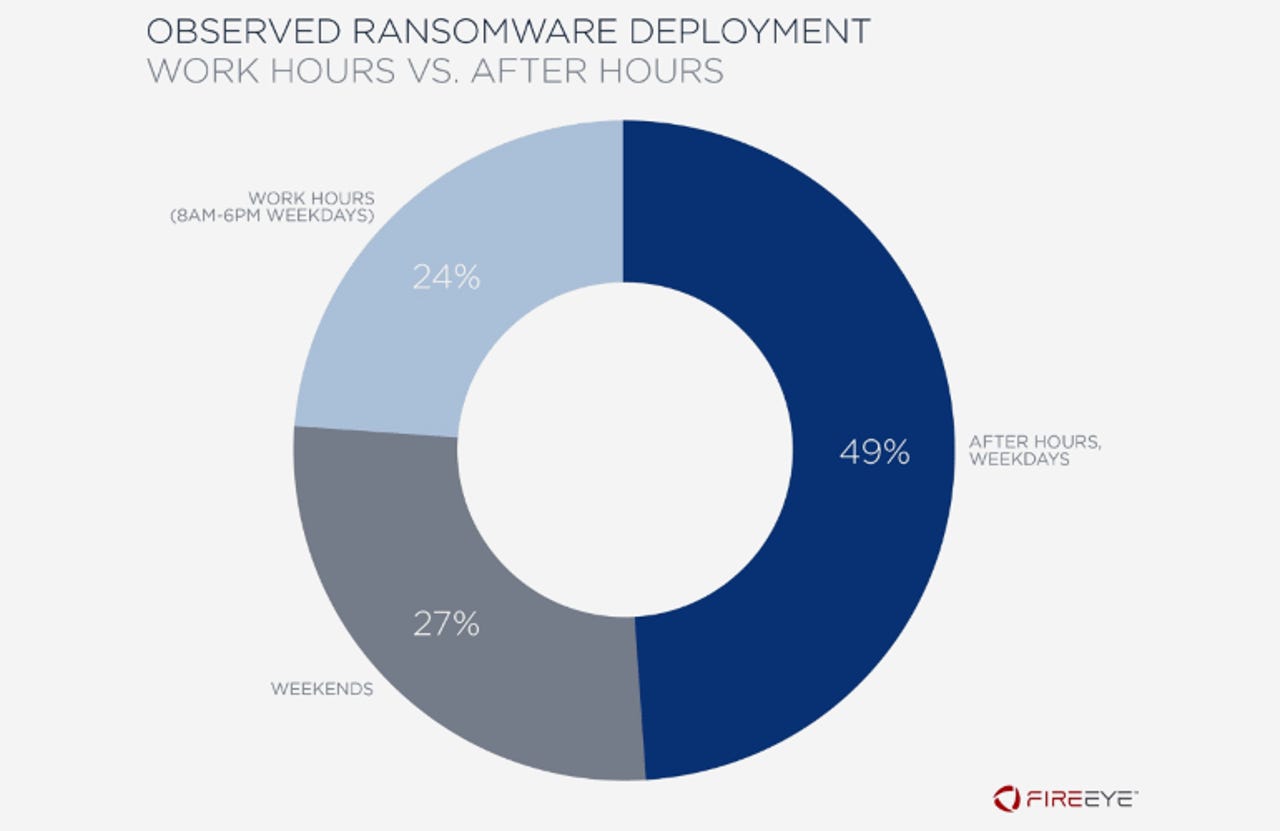Most ransomware attacks take place during the night or over the weekend


The vast majority of ransomware attacks targeting the enterprise sector occur outside normal working hours, during the night or over the weekend.
According to a report published today by US cyber-security FireEye, 76% of all ransomware infections in the enterprise sector occur outside working hours, with 49% taking place during nighttime over the weekdays, and 27% taking place over the weekend.
The numbers, FireEye said, were compiled from dozens of ransomware incident response investigations from 2017 to 2019.
The reason why attackers are choosing to trigger the ransomware encryption process during the night or weekend is because most companies don't have IT staff working those shifts, and if they do, they are most likely short-handed.
If a ransomware attack does trigger a security alert within the company, then there would be nobody to react right away and shut down a network, or the short-handed staff would have a hard time figuring what's actually happening before the ransomware encryption process ends and the company's network is down & ransomed.
FireEye says that most of these types of sneaky nighttime/weekend ransomware attacks are usually the result of a prolonged network compromise and intrusion.
The cybersecurity firm says that ransomware gangs breach a company's network, spend their time moving laterally to as many workstations as possible, and then manually install ransomware on all systems and trigger the infection.
The time from initial compromise to the actual ransomware attack -- known as a "dwell time" -- is, on average, three days, according to FireEye.
The rise of human-operated ransomware attacks
In all these cases, the ransomware is triggered at the attacker's behest, and not automatically once a network is infected -- which has been the old mode of operation for most ransomware strains.
Today, most ransomware gangs are in full control of their ransomware strains and they very carefully decide when it's the most suitable time to lock down a network.
Microsoft calls these types of incidents "human-operated ransomware attacks." In a report published last week, the OS maker included tips on securing networks and setting up detection rules to spot ransomware gangs during the "dwell time," and before they trigger their final payload and lock down companies.
FireEye said that since 2017, human-operated ransomware attacks have gone up 860%, and incidents now impact all sectors and all geographical locations, and not just North American companies.
In the cases FireEye investigated the most common infection vectors were:
Brute-force attacks against workstations with RDP (Remote Desktop Protocol) ports open on the internet
Spear-phishing against a company's employees and using one infected host to spread to others
Drive-by downloads (employees visiting a compromised website and downloading malware-infected files).
Just like Microsoft in its report last week, FireEye is now urging companies to invest in deploying detection rules for spotting attackers during their pre-infection "dwell time."
"If network defenders can detect and remediate the initial compromise quickly, it is possible to avoid the significant damage and cost of a ransomware infection," FireEye said.